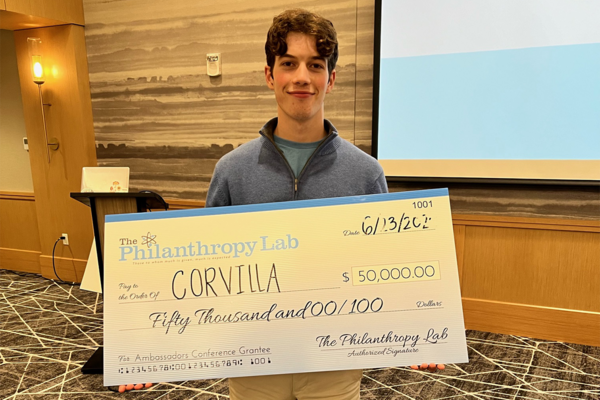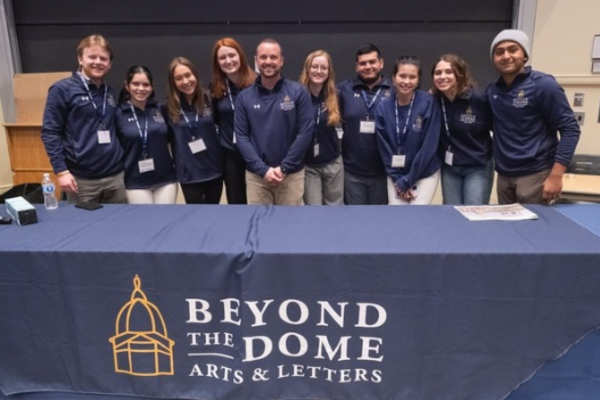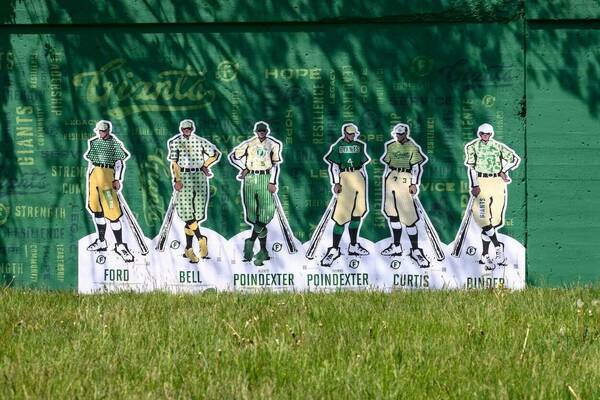
A University of Notre Dame professor has won two global awards for his visual designs that showcase the creation of a community baseball field in South Bend and celebrate early 20th-century Black baseball players in the city.
Clinton Carlson, the Robert P. Sedlack, Jr. Associate Professor in the Department of Art, Art History & Design, earned a first-place PRINT Award for Design for Social Impact and a Communication Arts Award of Excellence for his designs, which include the Foundry Field logo and posters of the Foundry Giants.
“These awards do give the project some validation and credibility in the design world, but more importantly, I hope it exhibits an alternative way in which designers can work with communities,” he said.
To generate knowledge about and excitement for the project, Carlson created designs for the Foundry Field website, brochures, social media, shirts, and other promotional items, such as a label for local brewery Crooked Ewe’s small-batch beer, Foundry Field Porter.
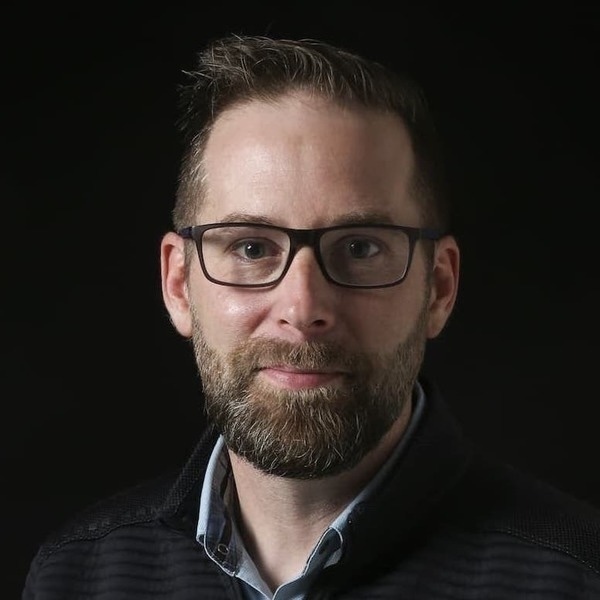
The PRINT award is for the outfield murals, public art, and workshops, and the Communication Arts award recognizes the entire package of 30-plus designs.
Carlson’s love and knowledge of the game informed his period-based reproductions and materials.
“I grew up with a dad who told stories of the Brooklyn Dodgers, and I have always observed and studied the historical artifacts of baseball — uniforms, stadiums, logos, typography, and advertising,” he said.
“That interest in the ways in which design was intersecting with baseball at historical points has really helped guide the design for Foundry Field.”
Students in a Baseball in America course taught by Katherine Walden, assistant teaching professor of American studies, researched those historical points, as well as the Giants, a team of Black players working in the Studebaker factory’s foundry who played in South Bend in the 1920s and ’30s. The students also explored questions of identity, power, and representation in the sport.
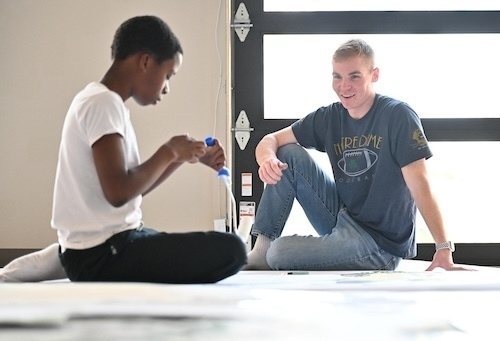
Carlson and Notre Dame design students Kenny Garrett, Neve Harrison, Kiaya Jones, Taylor Li, Catie Procyk, and Jennifer Santana utilized that research to create posters of Giants ballplayers with children at the Boys & Girls Club of St. Joseph County. The posters are now on the outfield wall.
“This project has shown the value of students working alongside the community, contributing to something that will exist in the community for years to come,” Carlson said.
“They feel a real sense of contribution.”
So, too, does Carlson, who said he’s never worked on a project that was more integrated into the community, or more attentive to its needs and wishes.
“It's also been incredible to make connections with community members whose families were part of this history,” he said.
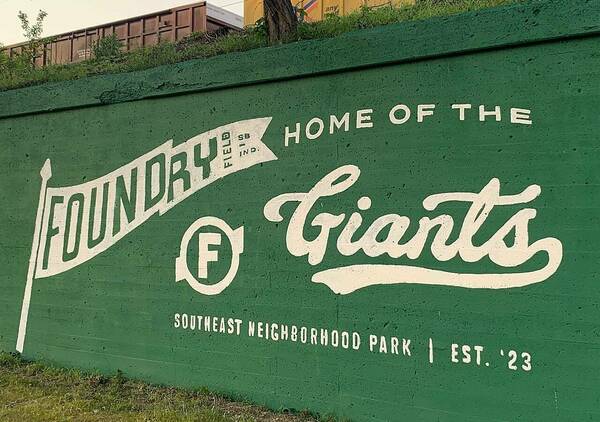
“To see and hear their excitement for the stories of their father or grandfather being shared makes me really grateful to be a part of Foundry Field.”
Carlson and Walden continue to be part of the evolving project.
Their Foundry Field research proposal was one of five inaugural 2024 Research Innovation Labs selected by the College of Arts & Letters’ Institute for Scholarship in the Liberal Arts to conduct thought-provoking cross-disciplinary research that has a lasting impact.
They’ll use the ballpark and its public art as the starting point “to foster greater engagement with historical and contemporary issues of race, representation, and access in South Bend.”

